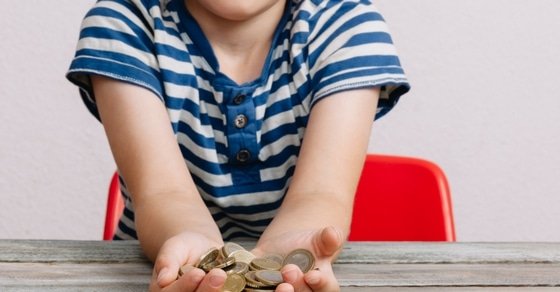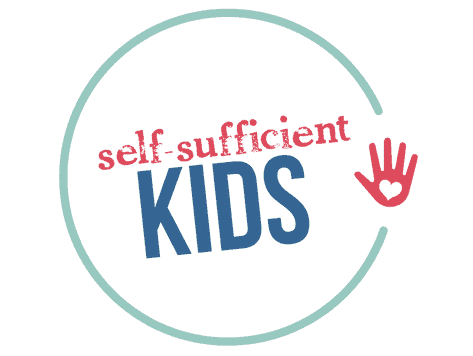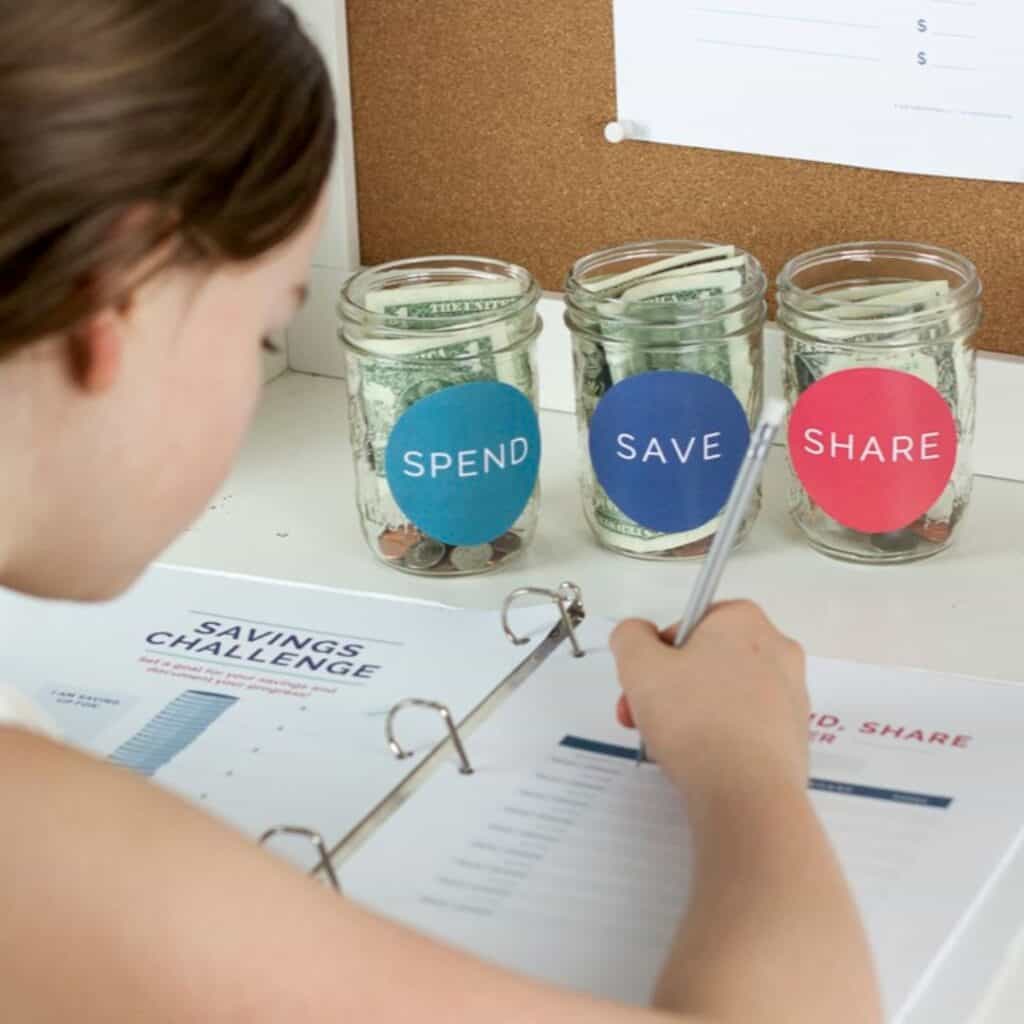Teaching Kids to Delay Gratification in a “Buy Now, Pay Later” World
Learning how to delay gratification and instead save money is one of the most important skills kids need to become financially secure adults. Here’s how parents can nurture a money-saving mindset in their kids.

It’s happened more times than I can count.
We’re in a store and one of my daughters spots something she wants. A beanie-boo, a sticker maker set, or a simple craft. Then comes the question:
“Can I get this?”
“With your allowance,” I say.
She takes a few seconds and stares carefully at the object in question.
Then she’ll look up at me with concern on her face and say: “But I’m saving up for [fill in the blank with most-desired object]!”
Sometimes she’ll put the item back on the shelf but other times she’ll hold onto it – clearly contemplating if she really wants it or not.
At this point, a wave of glee takes over me and all I can think is: “YES! It’s working!”
Grappling with Tough Choices
Delaying gratification – putting off what we want today for more financial security in the future, is no doubt challenging. Not only for kids, but many adults have yet to master it.
Yet, delaying certain purchases (often ones we don’t REALLY need) and instead saving money is essential to achieving financial goals. How else would it be possible to put down a security deposit for rent or a down payment on a home?
All too often learning how to delay gratification doesn’t happen until we’re adults. After we’ve made a few mistakes – like gotten into credit card debt or are caught with no emergency fund.
So what better time to learn this skill than when you’re young and the stakes are low.
Beyond money – delayed gratification is a life skill
And even beyond saving money, research shows the ability to delay gratification improves many facets of our lives.
In a now famous study conducted in the 1960s, coined the “marshmallow experiment”, Walter Mischel presented four-year-olds with a marshmallow and told them they could either eat it immediately or wait until he returned 15 minutes later at which point they would receive a second one.
Some of the kids waited but most didn’t.
Among the kids who were able to wait, researchers found that 40 years later this group performed better academically, earned more money over their lifetime, and were generally healthier and happier. They also had lower levels of substance abuse, lower likelihood of obesity, and better responses to stress.
Click on the image below to sign up for my weekly-ish newsletter and receive this children’s savings challenge sheet for free:
Fortunately, delayed gratification can be taught.
So what’s a parent to do if they have a kid who can’t sit still for more than a minute, or would most certainly eat that first marshmallow without a second thought?
Fortunately, Mischel and his team found that once kids in the study were given strategies to help them demonstrate self-control, they often did.
When it comes to money, in particular, there’s nothing better than letting kids learn by doing – which research shows results in higher learning gains and retention.
Feeling the anguish of having wasted money on an impulse buy first-hand, kids aren’t likely to make that mistake again.
Here are a few of the ways parents can help teach kids how to delay gratification by experiencing it first hand:
- Start Small: Parents can encourage kids to self-regulate or delay gratification in small ways. Examples include waiting patiently for dinner rather than having a snack or teaching kids to wait before speaking instead of interrupting a conversation.
- Give kids their own money: Once they’re old enough, give kids some of their own money to practice with. Let kids know they’re now responsible for certain expenses like toys, crafts, books or when they’re older, car insurance & gas, cell phone data plans, and clothes. See related: 7 Things You Should Stop Paying for Once Your Kids Have an Allowance.
- Not too little and not too much: The amount of allowance you give kids matters and might require some tweaking as kids grow. Make sure kids have just enough money so they can reasonably reach their savings goals but not too much that they’re flush with cash. This way they’ll be faced with tough buying decisions such as: should I buy this cheap Matchbox car that’s right in front of me or get closer to my savings goal of a three-speed bike?
- Avoid exceptions: Once you’ve made it clear which expenses your kids are responsible for, don’t back down. Don’t make an exception and give them a few extra dollars to buy a new Lego set or bail them out if they spent all of their money on new jeans and now don’t have enough money for gas. These lessons may be hard, but they’re easier to learn now than when credit card bills and mortgage payments are due.

It isn’t always easy
Supporting kids on the journey to learn self-control and delayed gratification isn’t easy. Sometimes it can take a lot of resolve on behalf of parents.
For example, one day when my girls and I visited a bookstore, my youngest had a meltdown in the third aisle of the children’s section. She just couldn’t understand why I wouldn’t buy her a book.
I love the idea of my girls buying books – so much so that I’ve offered to subsidize their book purchases by paying for half – and the truth was, my daughter didn’t really need or even want a book. She had seen her older sister make a purchase and couldn’t get it out of her head that she also needed to buy something.
But at the same time, she was eagerly saving up for a $60 Legos Friends Dolphin Cruiser set and didn’t want to part with her money. So she insisted I pay the entire price of the book for her.
Tears started to flow as I told her I wouldn’t make an exception.
“But I’m saving up my allowance!” she nearly yelled as she sat down on the floor with a look of insult on her face and determination to get her way.
It was tempting to feel embarrassed as other customers began looking in our direction, wondering what was going on.
We sat there for a good 10 minutes, among the Cat in the Hats and Fancy Nancy books, and we talked (or rather, I tried to talk but she refused to listen) about other alternatives like getting a book at the library or purchasing a book just after she’d saved up for the Lego set.
As the high pitched whining increased and her eyes became red from so many tears, I was tempted back down. But I knew I couldn’t. Not with this. Not with a lesson this important.
In the end, with a book in hand, we walked up to the cash register and at the last moment, my daughter grabbed my hand and whispered in my ear that she had decided not to purchase the book.
And as we left the bookstore, she continued to weep a little and complain about the decision she made (while I gave her multiple hugs and let her know it was OK).
But meanwhile, I couldn’t help feeling that what had taken place was so beneficial.
Being able to pass up an impulse buy at age 6 is tough, but it’s a lot easier than overspending and getting into credit card debt as an adult.
So even though it’s challenging, painful, and sometimes embarrassing to see my daughters wrestle with their purchasing decisions, we’ll keep at it again, and again and again. Until the lesson sticks. Until they understand why putting off an impulse today pays rewards in the future.
The Kids Money Management Toolkit has everything you need (except money!) to begin giving your kids an allowance. In addition to guidance and advice, you’ll also receive Save, Spend, and Share jar labels, a Kids Money Ledger, a Savings Challenge Sheet, a Jobs-for-Hire Sheet, and a Kids Allowance Contract. Click here to learn more.
See related:
How to Teach Kids to Budget Their Money
How to Teach Kids to Save Their Money
Everything Your Child Needs to Know About Money Before Leaving Home
10 Games That Teach Self-Control
About the Author

Kerry Flatley is the owner and author of Self-Sufficient Kids. She has a BA in economics, an MBA, a certificate in financial planning, and has been investing ever since she landed her first job. Kerry also has two girls, ages 11 and 13, who have been receiving allowance – and learning money management – for the past five years.

